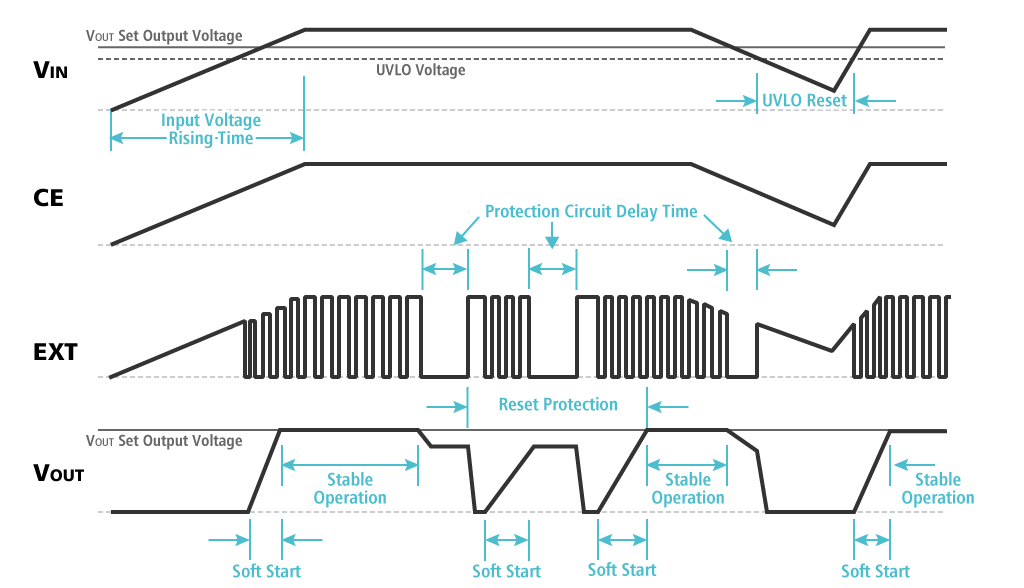What is hiccup protection in DC/DC converters? What is the difference between latch protection and hiccup protection?
DC/DC Switching RegulatorsProtection
Power management ICs are designed to turn off the output in case the output current surpasses by an over-current threshold. ICs with a hiccup protection release the protecting state automatically with soft-start operation. But if the cause of the error is not removed, the output will turn off again by the hiccup protection circuit and restart with soft-start. This repeated action looks like a hiccup, and this protection style operation is named "hiccup protection".
On the other hand, ICs with a latch protection keep shutdown state until receiving a command (or controlling the enable signal for the IC) from a host of the system to restart their operation or until restarting by power supply's turning off and on.
Hiccup type protection is used for systems which cannot output a restart signal to the ICs. Latch type protection is suitable for systems where safety is secured by system control, the output from the DC/DC converter must be kept shutdown until receiving a restart signal or being restarted by power on after power down.
Hiccup protection Timing Chart example (ex. R1224N)
EXT: Gate signal for driving an external switching MOSFET

Related Products
If you still have questions.
-
Search Other FAQs
-
Enter your question via our web form.







